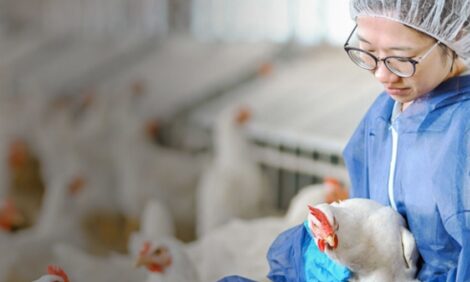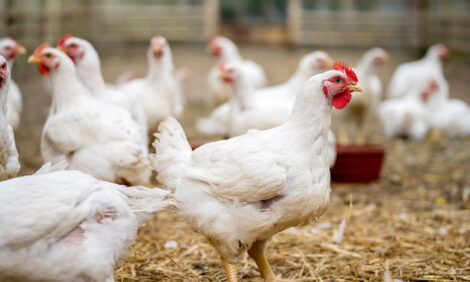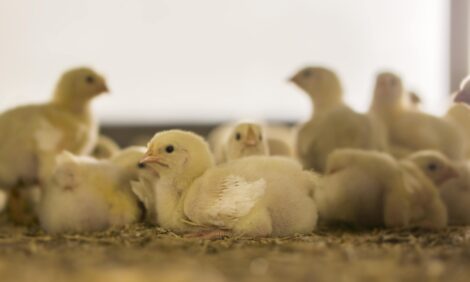



Gumboro Disease challenge, and the control: proofs of disease control
Part 5 of 6Part of Series:
< Previous Article in Series Next Article in Series >
In this series of 6 articles we are discussing the key aspects for the Gumboro Disease control. And in the part 5 we will disclose some proofs of disease control, and comparison of different tools.
Gumboro disease vaccines for broilers
Gumboro virus is a very persistent virus and can easily survive in the environment, complete Gumboro control is only possible with an application of an efficacious and well applied Gumboro vaccine.
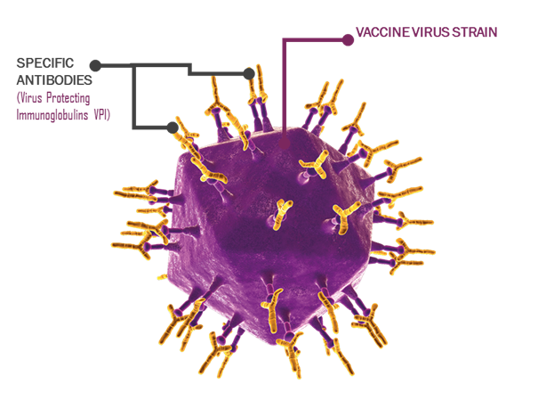
The immune-complex vaccines have the ability to fully colonize the bursa and to protect against all field IBD viruses. Once the bursa is blocked by the vaccine virus, the field and challenge viruses will not be able to infect the chick.
This characteristic will be essential for the prevention of virus shedding, and the virus population control.
The effect of these, can be observed in the field by displacement of the field virus, what we call Stop the Gumboro Cycle. This way the real control of the disease, what means not just the protection against the clinical signs of the disease, but as well, the prevention of a build-up pressure for the consecutive flocks.
See the expected result in the following image:
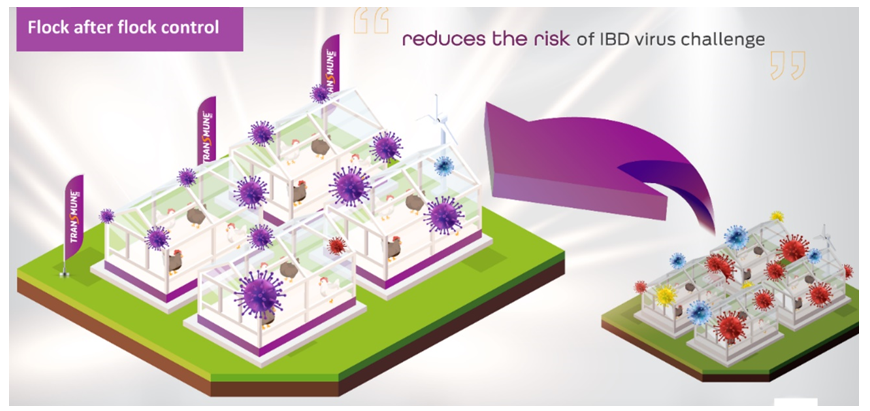
As described before, one of the most important aspects of the Gumboro disease control is to block the bursa against the replication of the field virus in the bursa by vaccine strain. It will cover, and avoid the replication against any field strain.
Let see the comparison of the immune-complex vaccine Transmune® versus rHVT-IBD vaccine in the graph 1. Important to remember the difference between the two technologies. Besides the immune-complex vaccine is composed by a live attenuated IBD virus, the recombinant technology have just the VP2 inserted in the Marek (HVT) virus. This way the VP2 will not replicate in the bursa, and not block the field virus replication.
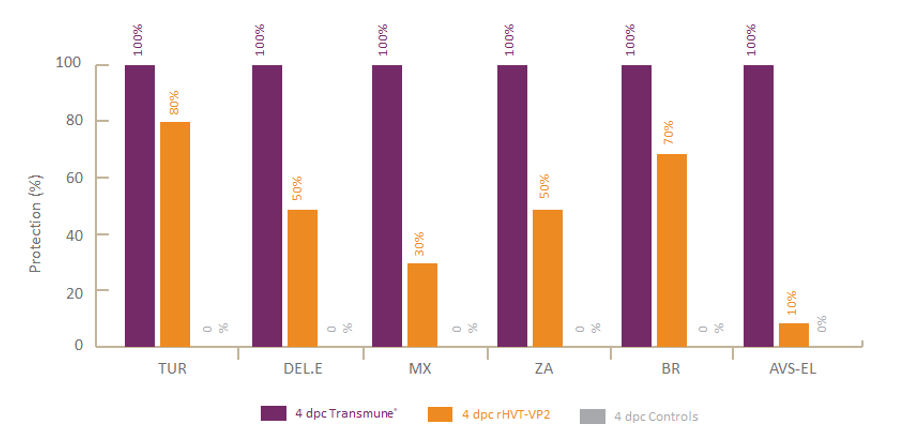
Graph 1: Commercial broilers vaccinated at day 1 with TRANSMUNE or a rHVT-VP2 vaccine and challenged at 28 days of age with a vvIBDV strain from Turket (TUR) or different Subclinical IBDV strains from USA (DelE, AVS-EL), Brazil (BR), Mexico (MX) or South Africa (ZA).
As effect of the bursa blockage, and avoiding the field or challenge virus to replicate in the bursa, this virus will not be spread in the environment, what is called “virus shedding control”, or simple virus control. See in the graph 2 an example of how a vaccination can interrupt the virus replication on the bursa, and consequently the virus shedding.
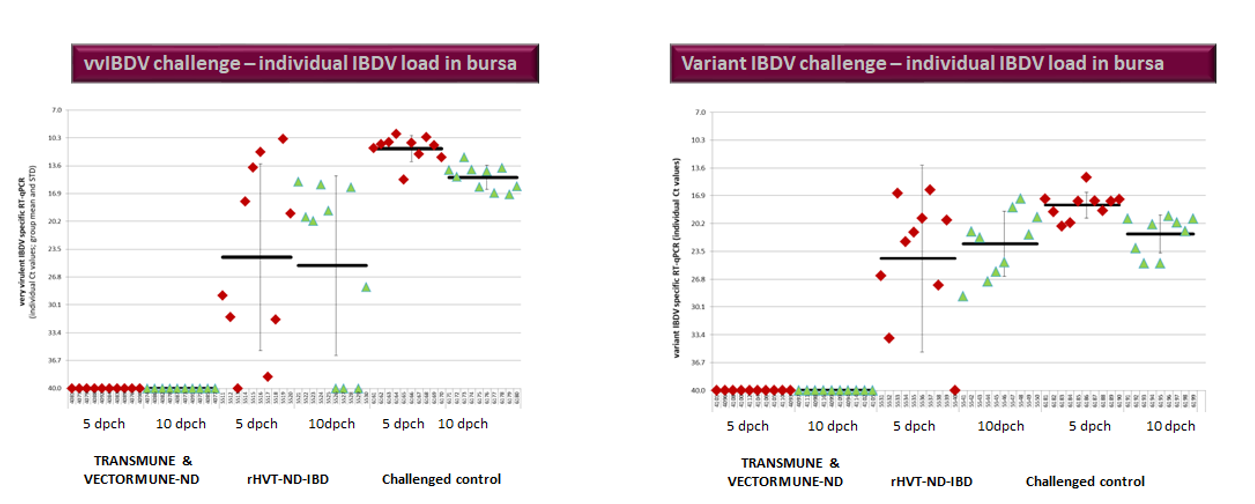
Graph 2: Commercial broilers vaccinated at day 1 with TRANSMUNE or a rHVT-ND-IBD vaccine and challenged at 28 days of age with against two different pathotypes: very virulent and subclinical variant. The efficacy assessment was based on challenge virus replication quantification in the bursa (at 5&10 dpch).
A clear difference can be observed between the 2 groups, demonstrating that the immune-complex vaccine are able to avoid the replication the challenge strain in the bursa, and in consequence prevent the virus shedding, and stop the Gumboro cycle.










